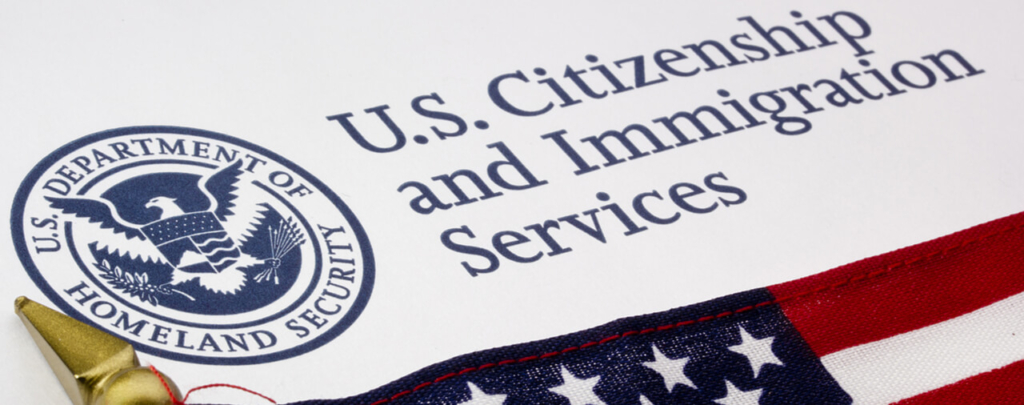- Updates in Litigation
- Introduction
- Executive Order Overview
- Memorandum to President Trump on Review of the USRAP
- Nationals of Eleven Countries Identified as Presenting Higher Risk
- Pause on Following-to-Join Refugee Processing to Implement Enhanced Screening
- Other Changes Outlined in Memorandum Addendum
- Increased Data Collection and Identity Management
- Changes to Interview and Adjudication Process
- Improvements to System Checks
- Broadening of Security Advisory Opinions
- Conclusion
Updates in Litigation
Update (Dec. 28, 2017): On December 22, 2017, the United States District Court for the Western District of Washington granted a preliminary injunction against the implementation of two parts of the memorandum implementing Executive Order 13815 (the subject of this article [see section]. The injunction prevents the Government from suspending the processing and suspending the admission of following-to-join refugees. It also enjoins the Government from taking actions to suspend or inhibit the admission of refugees from Security Advisory Opinion countries. However, in both cases, the injunction applies only to individuals with a bona fide relationship to a person or entity in the United States. The injunction does not prevent the Government from working to implement additional security measures for following-to-join refugees or detailed threat assessments of Security Advisory Opinion countries.
Introduction
On October 24, 2017, President Donald Trump issued an Executive Order titled “Resuming the United States Refugee Admissions Program With Enhanced Vetting Capabilities” [PDF version].
On March 6, 2017, President Trump suspended the United States Refugee Admissions Program for a period of 120 days as part of his Executive Order 13780 [see article]. The Supreme Court of the United States allowed these provisions to go into effect, narrowing multiple lower court injunctions on June 26, 2017 [see article]. The suspension of the United States Refugee Admissions Program expired on October 24, 2017.
President Trump’s new October 24 Executive Order resumes the United States Refugee Admissions Program subject to new policies that were developed in accord with the directives in his Executive Order 13780 [see article]. In this article, we will examine the provisions of President Trump’s new Executive Order and what it will mean for the United States Refugee Admissions Program going forward. We will discuss many of the specific policies outlined in a Memorandum to President Trump written by Secretary of State Rex Tillerson, acting Secretary of Homeland Security Elaine Duke, and Director of National Intelligence Daniel Coates [PDF version]. Most of the specific policy changes, including important ones relating to nationals of eleven countries and following-to-join refugees, are detailed in the memorandum to President Trump. President Trump has accepted the recommendations as part of his Executive Order.
Please also see our related article on President Trump’s decision to set the fiscal year 2018 refugee admissions cap at 45,000 [see article].
Executive Order Overview
We will begin by examining the provisions of the Executive Order. After completing our review of the October 24 Executive Order, we will examine the new policies adopted by President Trump as a result of the 120-day review of refugee policy.
Section 1(a)-(d): Statement of Policy and Review Conducted After Executive Order 13780
In section 1(a) of the Executive Order, President Trump set forth the overall policy guiding its provisions. He stated that “[i]t is the policy of the United States to protect its people from terrorist attacks and other public-safety threats.” He identified “[s]creening and vetting procedures” for foreign nationals seeking entry into the United States, including as refugees, as “play[ing] a critical role in implementing that policy.”
In section 1(b) of the Executive Order, President Trump noted that section 5 of Executive Order 13780, he had directed the Secretary of State, the Attorney General, the Secretary of Homeland Security, and the Director of National Intelligence to develop a uniform baseline for the screening and vetting of all travelers seeking entry into the United States.
Section 1(c) of the new Executive Order summarizes the refugee-specific provisions of Executive Order 13780. Section 6 of Executive Order 13780 had suspended for a period of 120 days the travel of refugees into the United States under the United States Refugee Admissions Program (USRAP). President Trump had directed the Secretary of State, in consultation with both the Secretary of Homeland Security and the Director of National Intelligence, to conduct a 120-day review of USRAP application and adjudication procedures for the purpose of developing and implementing new procedures “to ensure that individuals seeking admission as refugees do not pose a threat to the security and welfare of the United States.” Executive Order 13780 explained that foreign terrorist groups have sought to exploit the refugee programs of several nations. Furthermore, the U.S. Attorney General “had reported that more than 300 persons who had entered the United States as refugees were then the subjects of counterterrorism investigations by the Federal Bureau of Investigation.”
In section 1(d) of the new Executive Order, President Trump explained that Secretary of State Tillerson “convened a working group to implement the review process under section 6(a) of Executive Order 13780.” President Trump stated that the “review was informed by the development of uniform baseline and screening procedures for all travelers under section 5 of Executive Order 13780.” We discuss the uniform procedures in our article on President Trump’s September 24, 2017 Presidential Proclamation [see article]. In section 1(e) of the new Executive Order, President Trump took the position that the results of the review process set forth in Executive Order 13780 “made our nation safer.” He stated that the working group identified areas that must be strengthened:
The data-collection process for refugee applicants;
The refugee interview process;
Fraud detection procedures;
Interagency information sharing; and
The ability of systems to check biometric and biographical information.
Section 1(e)-(h): Applicability of September 24 Presidential Proclamation
Under section 2 of President Trump’s September 24, 2017 Proclamation, the entry of nationals of eight countries was suspended and limited to varying degrees for each country (however, the issue is currently being litigated). In section 1(g) of the new Executive Order on refugees, President Trump cited to section 3(b)(iii) of the Proclamation in noting that these restrictions do not apply to those who seek entry through the USRAP. He explained that the different treatment reflects the differing concerns and dispositions of those who seek to enter the United States with an immigrant or nonimmigrant visa and those who seek entry through the refugee program. For example, he cited the different security concerns and risk factors that are presented in the screening and vetting processes.
Section 2: Resuming the U.S. Refugee Admissions Program
In section 2(a) of the new Executive Order, President Trump noted that the suspension of the USRAP ended on October 24, 2017. Because the Secretaries of State and Homeland Security and the Director of National Intelligence have advised the President that the new review procedures “are generally adequate to ensure the security and welfare of the United States,” President Trump has allowed for the resumption of the USRAP in a manner consistent with the current Executive Order. In section 2(b), he clarified that “a general resumption of the USRAP, subject to the conditions set forth in section 3 of this order, is consistent with the security and welfare of the United States.”
Section 3: New Policies and Procedures
In section 3(a)(i) of the new Executive Order, President Trump directed the Secretary of State and the Secretary of Homeland Security to “coordinate to assess any risks to the security and welfare of the United States that may be presented by entry into the United States through the USRAP of stateless persons and foreign nationals.” He directed both officials to determine the actions necessary to ensure the welfare and security of the United States in the administration of the USRAP in accord with section 207(c) and 212(a) of the INA and 6 U.S.C. 202(4). Both officials must administer the USRAP in a manner consistent with those determinations and in consultation with the Director of National Intelligence.
In section 3(a)(ii), President Trump directed the Secretary of Homeland Security, in consultation with the Secretary of State and the Director of National Intelligence, to “determine, as appropriate and consistent with applicable law, whether any actions taken to address the risks to the security and welfare of the United States presented by permitting any category of refugees to enter this country should be modified or terminated, and, if so, what those modifications or terminations should be.” Subsequent determinations will be made on an annual basis.
Section 3(a)(iii) of the new Executive Order requires the Attorney General, in consultation with the Secretary of State, the Secretary of Homeland Security, and the heads of other executive agencies and departments deemed appropriate by the Attorney General, to report to the President “on the effect of refugee resettlement in the United States in the United States on the national security, public safety, and general welfare of the United States.” The Attorney General is to provide recommendations that he deems necessary to advance these national security interests.
Memorandum to President Trump on Review of the USRAP
On October 23, 2017, Secretary of State Rex Tillerson, acting Secretary of Homeland Security Elaine Duke, and Director of National Intelligence Daniel Coates sent a memorandum to President Trump titled “Resuming the United States Refugee Admissions Program With Enhanced Vetting Capabilities.” The memorandum, referenced on multiple occasions in President Trump’s Executive Order, came as a result of the review directed by section 6(a) of Executive Order 13780. Its recommendations are incorporated into President Trump’s new Executive Order by reference. In these sections, we will review the new policies and procedures outlined in the memorandum to President Trump.
The DOS posted a short summary of its proposed changes on its website [PDF version].
Nationals of Eleven Countries Identified as Presenting Higher Risk
The memorandum stated that its three authors “continue to have concerns regarding the admission of nationals of, and stateless persons who last habitually resided in, 11 particular countries previously identified as posing a higher risk to the United States through their designation on the Security Advisory Opinion (SAO) list. The memorandum added that the list was established in the aftermath of September 11, 2001, and that it has been updated on numerous occasions since. The most recent version of the list was formulated in 2015.
The memorandum stated that the three departments, in accord with sections 207(c) and 212(a) of the INA and 6 U.S.C. 202(4), will conduct a detailed threat analysis and review of nationals of these eleven countries and stateless individuals who last habitually resided in these countries. During this review period, the Secretary of State and the Secretary of Homeland Security “will temporarily prioritize refugee applications from other non-SAO countries.” Resources that would have otherwise been allocated to individuals from these SAO countries will instead be used to process applicants from non-SAO countries.
However, applications of certain nationals of SAO countries and stateless individuals who last habitually resided in such countries will be carefully scrutinized during the review period and taken up on discretionary basis. The Secretary of Homeland Security and Secretary of State will only consider individuals from these countries for admission “whose resettlement in the United States would fulfill critical foreign policy interests, without compromising national security and the welfare of the United States.” Accordingly, the Secretary of Homeland Security will only “admit on a case-by-case basis … refugees whose admission is deemed to be in the national interest and poses no threat to the security or welfare of the United States.” They will work to complete the review of SAO countries within 90 days of October 23, 2017, and to determine what additional safeguards, if any, are necessary to vet individuals from those eleven countries. However, the addendum to the memo explains that delays for applicants from SAO countries are “likely to extend further into the fiscal year…”
President Trump accepted these recommendations and the review period in section 3 of his Executive Order.
Interestingly, the memorandum does not identify the eleven SAO countries. According to a report in Reuters, the eleven countries were, as of the end of 2016: Egypt, Iran, Iraq, Libya, Mali, North Korea, Somalia, South Sudan, Sudan, Syria, and Yemen (and Palestinians living any of these countries).1 However, it is important to note that the information has not been made public, so the report cannot be taken as an official or definitive list of countries.
Pause on Following-to-Join Refugee Processing to Implement Enhanced Screening
The memorandum stated the determination of the three officials “that additional security measures must be implemented promptly for derivative refugees-those who are ‘following-to-join’ principal refugees that have already been resettled in the United States-regardless of nationality.” The memorandum explained that, under the current system, following-to-join refugees do not undergo the enhanced DHS review that principal refugees are subjected to. For this reason, the preparers of the memorandum determined that additional security measures must be implemented for following-to-join refugees before their admission may resume. While providing no time-table, the memorandum states that the departments will work “to implement adequate screening mechanisms for following-to-join refugees that are similar to the processes employed for principal refugees…” The memorandum states admissions will resume of following-to-join refugees only after the new procedures are in place.
In the addendum to the memorandum, the following changes will be emplemented (quoted):
1. Procedures to ensure that all following-to-join refugees receive the full baseline interagency checks that principal refugees receive;
2. Requiring the submission of the beneficiary’s [Form] I-590 application in support of the Form I-730 earlier in the process to provide for more thorough screening;
3. Vetting certain nationals or stateless persons against classified databases; and
4. Expanding SAO requirements for this population in keeping with the agreed-to expansion for I-590 refugee applicants.
The memorandum estimates that approximately 2,500 following-to-join refugees are petitioned for each year. These may represent over 60 nationalities. The DHS explained that the most represented nationalities of beneficiaries of following-to-join petitions in recent year were Iraqi, Somali, Burmese, Congolese, Ethiopian, and Eritrean.
Please note that following-to-join derivative refugees are distinguishable from derivative refugees who reside in the same place as the principal and whose petitions are processed contemporaneously with the principal’s. The foregoing provisions apply only to following-to-join refugees.
Other Changes Outlined in Memorandum Addendum
In addition to the two major policy announcements regarding SAO countries and following-to-join refugees, the memorandum outlines other changes to refugee procedures that have come about as a result of the 120-day review in section 6(a) of Executive Order 13780. For those interested in USRAP procedures and potential vulnerabilities, please see our recent blog on a Government Accountability Office (GAO) report that examined the previous procedures [see blog].
Increased Data Collection and Identity Management
The memorandum states that additional data will be collected from all refugee applicants. This includes those who are not nationals of or stateless individuals who last habitually resided in one of the 11 SAO countries. The memo also states that improvements have been made to the electronic refugee case management system to better detect potential fraud.
Changes to Interview and Adjudication Process
First, the United States Citizenship and Immigration Services (USCIS) will now “forward-deploy specially trained Fraud Detection and National Security (FDNS) officers at refugee processing locations to help identify potential fraud, national security, and public safety issues on certain circuit rides and to advise and assist interviewing officers.”
Second, the USCIS is “strengthening its guidance on how to assess the credibility and admissibility of refugee applicants.” The memorandum states that the new guidance will clarify how to identify and analyze grounds of inadmissibility related to:
Drug offenses;
Drug trafficking;
Prostitution;
Alien smuggling;
Torture;
Membership in totalitarian parties;
Fraud and misrepresentation;
Certain immigration violations; and
Other criminal activity.
The new guidance for interviews will also focus on training officers on making credibility determinations and identifying “inadequate or improper interpretation.”
Finally, the Department of State and the USCIS will coordinate to develop new lines of questioning to catch potential fraud, national security threats, or public safety concerns.
Improvements to System Checks
New measures have already been implemented to flag cases where applicants “change or update key data points, including new or altered biographic information” for “renewed scrutiny and security checks.
Broadening of Security Advisory Opinions
The memorandum states that the classes of refugee applicants who are subject to SAOs will be expanded. Furthermore, the USCIS’s Fraud Detection and National Security Directorate will also expand its enhanced review process for any applicants who meet the SAO criteria. This enhanced review will include checks against certain social media and classified databases.
Conclusion
With his new Executive Order, President Trump opts against extending the suspension of the USRAP beyond the now-expired 120-day period in Executive Order 13780. Instead, he accepts the recommendation of the Secretary of State, the Secretary of Homeland Security, and the Director of National Intelligence to re-start the program with new policies, procedures, and security enhancements in place.
It remains to be seen how most of the changes will be implemented and how they will affect the refugee adjudication process. The two changes that should have immediate effects are those pertaining to the eleven “SAO countries” and to following-to-join derivative refugees.
A refugee applicant with questions about the process or eligibility requirements should consult with an experienced immigration attorney. Immigration attorneys along with refugee resettlement agencies will remain abreast of changes and new policies to the USRAP.
We will update the site with new information on the Trump Administration’s refugee policies or new litigation on the issues as it becomes available. To learn more about asylum and refugee protection, please see the full category of articles on our website [see category].



-1024x405.jpg)
-1024x405.jpg)
